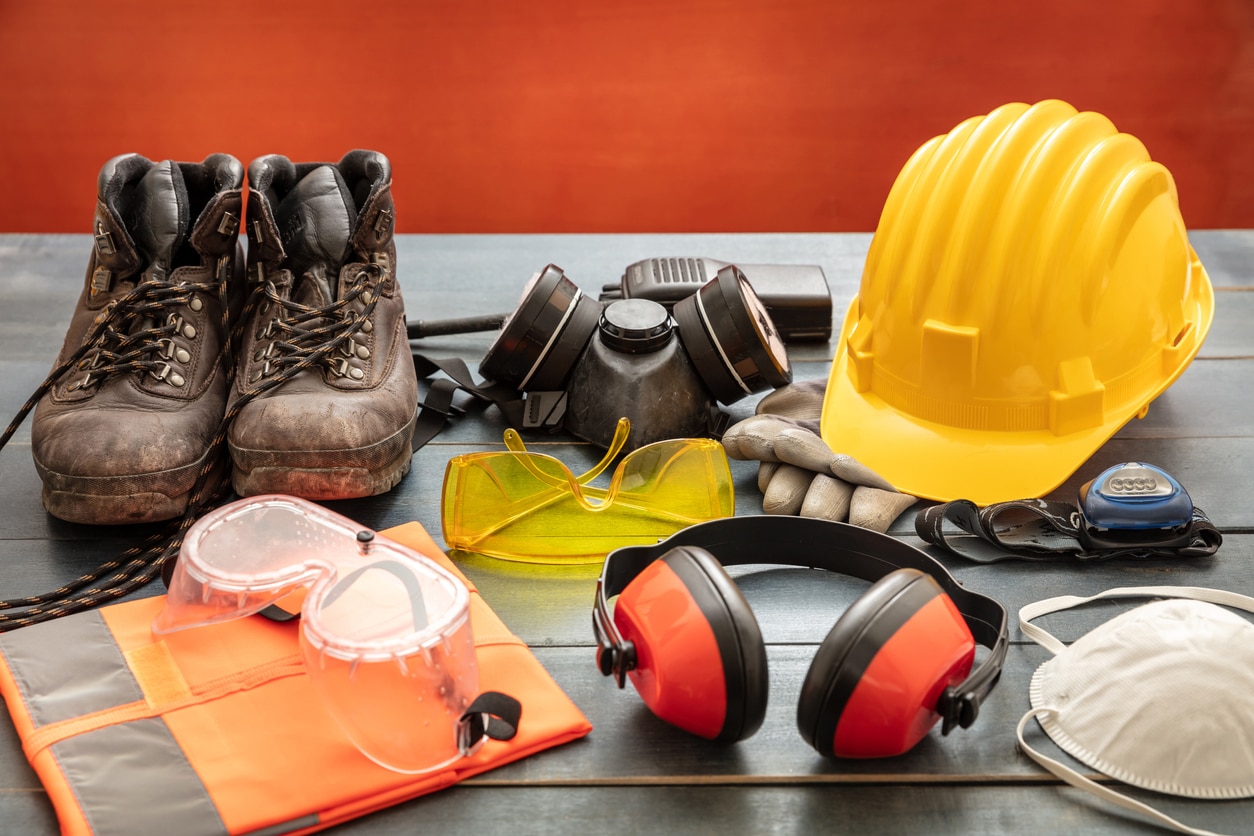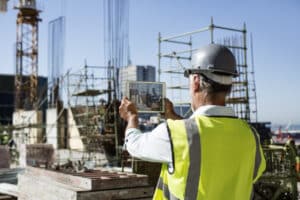
6 Construction Tech Trends that will Power Jobsites in 2022
Across the world of building materials, manufacturers have been developing new tech solutions to make it easier for distributors and their clients to complete their next wave of projects. The pandemic brought new challenges to our previously established work routines, forcing many in our industry to adopt new solutions for accomplishing our jobs. Thankfully, this flexibility has allowed the construction industry to remain active and profitable throughout 2020 and 2021. Here are a number of exciting tech trends that we expect to be more utilized in 2022:
1. Improved Data Collection & Automation
Architects, designers and construction teams rely on good data in order to help inform their decisions and collaborate easily across a wide range of projects. Data collection apps have become increasingly popular throughout the construction industry over the past few years for tracking data points such as safety compliance, fueled by the portability of smartphones and tablets. How do these tools improve our ability to share data and collaborate?
By utilizing a smartphone-based data collection app, it becomes easier for teams to gather accurate and high-quality data in while working at a jobsite. Data collection apps help streamline the entire process of reporting and review, saving both time in the field along with admin. Additionally, many data collection workflows can be fully automated, saving even more time and allowing workers to shift their focus
2. Green Techniques / Sustainable Construction
As concerns about environmental impact grow, the homebuilding and residential construction industries are looking for methods to increase efficiency in building materials while reducing our contribution to climate change. To reach these goals, architects and manufacturers have adopted a number of new materials and solutions that help reduce environmental impact by:
- Developing products by using recycled materials (F-Sorb)
- Combining several types of products into one solution (integrated panels)
- Ensuring that building materials are long –lasting and durable, helping to reduce excess waste

3. Virtual and Augmented Reality
Virtual Reality is an added layer of data that enhances someone’s view of the real world. By using a device embedded with VR or augmented reality technology, construction team members are able to look at a jobsite with additional information laid directly on top of what they are seeing.
For example, a worker could point their smart device at a wall, and the device could display the building plans for that wall as if they were part of the physical environment. Another example would be displays of real-time safety information for workers, identifying potential hazards before they become issues. Virtual and augmented reality have huge implications for construction teams because they provide additional data exactly where it is needed, making it quicker and easier to access key pieces of information.
4. Building Information Modeling
Contractors have been utilizing Building Information Modeling for years in order to quickly obtain important data without spending an extensive amount of time gathering it. Today, construction projects benefit from 3D modeling and design by helping them improve their project management, safety and sustainability. Companies like AutoCAD and Propeller Aero are providing 3D visualization solutions and drafting software that allows for improved project planning, progress tracking, and access to key data analytics.
5. Construction Wearables
In recent years, numerous advances to wearable tech and PPE have made it easier than ever before to remain safe while working on a jobsite. Wearable technology offers workers the possibility of added safety protection, potentially preventing accidents and avoiding injuries in the process. While this technology is continuing to develop, here are a few solutions that are already available today:
- Smart Boots: Powered by the act of walking, smart boots can detect the risk of a collision with a nearby vehicle and potentially prevent an accident.
- Exoskeletons: These large personal devices are wearable machines with motorized joints. They help reduce the stress to the body on repetitive movements such as lifting and carrying building materials, helping to prevent the possibility of injury.
- Smartwatches: These devices help improve lone worker safety, check for fatigue, and enable contact tracing.
6. 3D Printing
While this technology is still in its infancy, 3D printing is currently being utilized to design and build ornamental objects, add-ons or additional fixtures in an existing system. With this process, you can create complex designs without support structures or excess material, saving time and money in the process.
Not only is 3D printing more environmentally sustainable, but it is much quicker than traditional development – and in a post-pandemic world of long lead times, the ability to quickly create an additional fixture or ornament becomes even more important.
As we’re still in the early days of this technology, you unfortunately won’t be able to print yourself an entire house just yet. Experts are predicting that over time, as the technology develops and improves, we will see more 3D printing solutions adopted by construction companies.
The Future
As our industry continues to grow and evolve, so does the technology that fuels our projects. Construction technology is advancing rapidly in order to keep up with the demand for newer, more efficient construction projects, helping workers make even more informed decisions than before. It is our hope that over time, we are able to use technology in order to help our team members work smarter, stronger, and safer.
For more information, follow the links below:
Construction Technology is Reshaping the Industry: Construct Connect
5 Contech Trends that will Power Jobsites in 2022: Construction Dive
The information provided is for general informational purposes only. All information provided is in good faith, and is not intended as a substitute for obtaining accounting, tax, legal, or financial advice from a professional accountant or lawyer. Any opinions expressed are those of the author. L&W Supply makes no warranties of any kind, express or implied, regarding, the accuracy, adequacy, validity, reliability, availability, or completeness of any information provided herein. Any questions regarding the information provided should be addressed to the author.

L&W Supply Announces North Atlantic Region Realignment and Promotions
Bill Withers and Ryan Donegan promoted to district managers to support regional growth BELOIT, WI — December 9, 2025 — L&W Supply, one of the nation’s leading distributors of interior building materials and construction supplies, has announced the promotions of Bill Withers and Ryan Donegan to district manager roles within its realigned North Atlantic Region […]

L&W Supply Announces New President
Frank Marcoccio will succeed Dan Piché as president of L&W Supply, effective January 1, 2026 BELOIT, WI — October 1, 2025 — ABC Supply Co., Inc., announced Frank Marcoccio will succeed Dan Piché as president of L&W Supply, a nationwide wholesale distributor of interior building materials and construction supplies. This transition will be effective January 1, […]